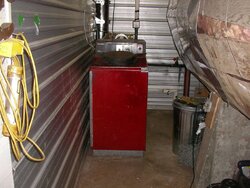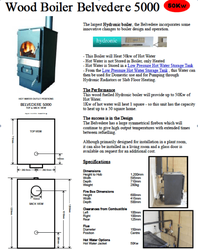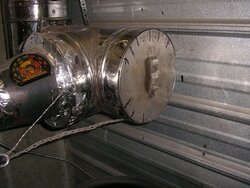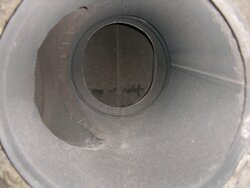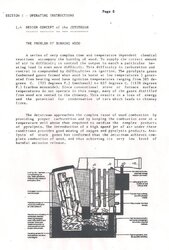Hi Guys Newbie here, love reading all your topics you guys are so much mre advanced in your heating then we are in Australia.
I currently have electric heating I live in a farm house with 500 acres of woodland so plents of hard wood to burn.
In Australia the wood fires with wetbacks are small and they are used as an nstant type heat for example the boiler holds 50 litres of water once the 50 litres heatd up its pumped to wall radiators NO STORAGE if the fire goes out the heat stops.
I want to hve storage like you guys seem to have.
I have a few questions
that i hope some one can answer
1. I plan to have 1,000 litres of storage which is fed from a 50 kw boiler the water in the tank will be heated from thermosiphon into the tank
1.My questions are do I then pump water from the top of the tank to go into my radiators?
2. how does the water mix inside the tank does it need to be mixed or will hot water keep rising until all the water in the tank is hot?
3. Where would I put the probe in the tank to tell the boiler to stop firing top middle bottom?
Thanks and Gday from Australia.
I currently have electric heating I live in a farm house with 500 acres of woodland so plents of hard wood to burn.
In Australia the wood fires with wetbacks are small and they are used as an nstant type heat for example the boiler holds 50 litres of water once the 50 litres heatd up its pumped to wall radiators NO STORAGE if the fire goes out the heat stops.
I want to hve storage like you guys seem to have.
I have a few questions
that i hope some one can answer
1. I plan to have 1,000 litres of storage which is fed from a 50 kw boiler the water in the tank will be heated from thermosiphon into the tank
1.My questions are do I then pump water from the top of the tank to go into my radiators?
2. how does the water mix inside the tank does it need to be mixed or will hot water keep rising until all the water in the tank is hot?
3. Where would I put the probe in the tank to tell the boiler to stop firing top middle bottom?
Thanks and Gday from Australia.


